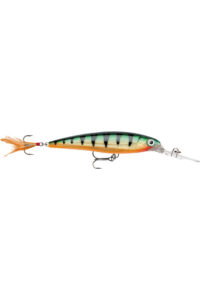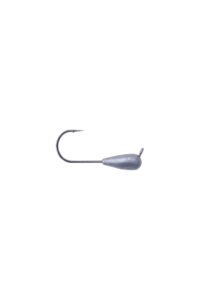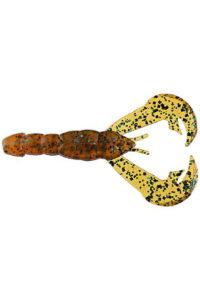CRAPPIE FISHING TECHNIQUES AND TIPS
Fishing | March 27, 2024
SAIL
March 24, 2023

The largemouth bass is an extremely popular sportfish, and the numerous natural lakes and rivers found in Ontario and Quebec offer some of the best largemouth bass fishing in Canada. If you’re new to bass fishing and want to learn how to catch more and bigger largemouth bass, applying the following tips and techniques will help you improve your angling success this season.
In this article, you will learn more about:
Largemouth bass are commonly found in shallow, warm-water areas containing adequate cover (e.g., vegetation and wood), such as fertile bays, flats and shorelines. The best largemouth fishing locations often combine different features, which can include various plants, points, boat docks, boulders, fallen trees, tree stumps and beaver dams. An area must also hold plenty of and other food in order to attract bass.
For many Ontario and Quebec anglers, the best largemouth bass fishing occurs from late June to August, and then from October to November. The summer-to-fall transition period can challenge some anglers, but there are still plenty of bass to be caught during this time.
The best time of day to fish for largemouth can vary, depending on the characteristics of the water body you’re fishing and time of year. Generally, early morning and evening are excellent times to fish for largemouth as bass are often active.
Largemouth can also be caught throughout the day. Overcast conditions can encourage bass to roam and look for food. Bright, sunny days, however, often mean largemouth hold tighter to cover. This can make them less inclined to chase lures, but put your bait within striking distance and there’s a good chance a largemouth will attack.
From the middle of autumn to ice up, it’s common for baitfish and largemouth to increasingly relate to rocky areas, which can hold the sun’s heat. As a result, some anglers find midmorning to midafternoon a good timeframe for catching largemouth in the fall.
Answering the question of “How to catch largemouth bass” can be approached several ways, but there’s benefit to keeping things simple if you’re new to fishing for bass. With this in mind, here are a few important fishing concepts guaranteed to help you catch more largemouth.
If you’re not sure where to start at the beginning of the day, or when fishing a waterbody you’ve never been on before, it’s hard to go wrong covering water with a horizontally moving lure, like a jerkbait, crankbait, ChatterBait or spinnerbait. These types of reaction baits often appeal to active bass but can also trigger inactive largemouth to strike.
Baits to consider: 13 Fishing Jabber Jaw, Berkley Choppo, Rapala X-Rap, Strike King Red Eye Spinnerbait, Z-Man Project Z ChatterBait with Razor ShadZ soft bait as a trailer.

Rapala X-Rap
Fishing a bait along the floor is a great technique when largemouth are low in the water column. Tube jigs, Texas-rigged worms and stickbaits, as well as Ned rigs are good for working bottom.
Experiment with the retrieve. Sometimes bass prefer a presentation dragged and then paused. Other days a lift-fall sequence is better.
Baits to consider: Berkley PowerBait Power Tube on Fusion19 Tube Jig, Z-Man Hula StickZ on Power Finesse ShroomZ Jig, Freedom Tackle Football Jig with plastic craw trailer.

Berkley Fusion19 Tube Jig
Largemouth bass love aquatic plants. Lily pads, floating mats, reeds, and lush healthy cabbage and coontail are just some examples of the kinds of vegetation largemouth bass often call home. Consequently, if you want to catch more and bigger largemouth bass, you need to learn how to fish aquatic vegetation.
Casting and working a Texas-rigging, a soft-plastic worm or crayfish around vegetation edges will catch largemouth. A weedless flipping jig with a plastic trailer can also be used. Many of the horizontal moving lures referenced above are also effective for working open-water areas above and beside aquatic plants.
Baits to consider: Texas-rigging options: Berkley MaxScent Creature Hawg, Jackall Chunk Craw, Strike King Rage Craw; bass jigs: Strike King Hack Attack, Freedom Tackle Flipping Jig, Z-Man CrosseyeZ Flipping Jig. Stickbaits: Berkley General, Yamamoto Senko.

Strike King Rage Craw
If you’re new to largemouth bass fishing, a good outfit to begin with is a 6’6” or 7’ medium power, fast action spinning rod and a spinning reel filled with 20-pound braided line tied to a 10- to 20-pound fluorocarbon leader. With this set-up you can fish jerkbaits, shallow-diving crankbaits, Ned rigs, 1/8- to 3/8-ounce jigs and Texas-rigged worms, stick-baits and small topwaters.
If you like the idea of fishing heavy flipping jigs, topwater frogs and other baits for largemouth relating to thick, heavy cover, you’ll need more power by way of a medium-heavy or heavy bait casting or spinning rod and 30- to 50-pound braid. Conversely, a medium-light spinning rod outfit with 10- to 15-pound braid will serve you well if you prefer finesse fishing techniques.